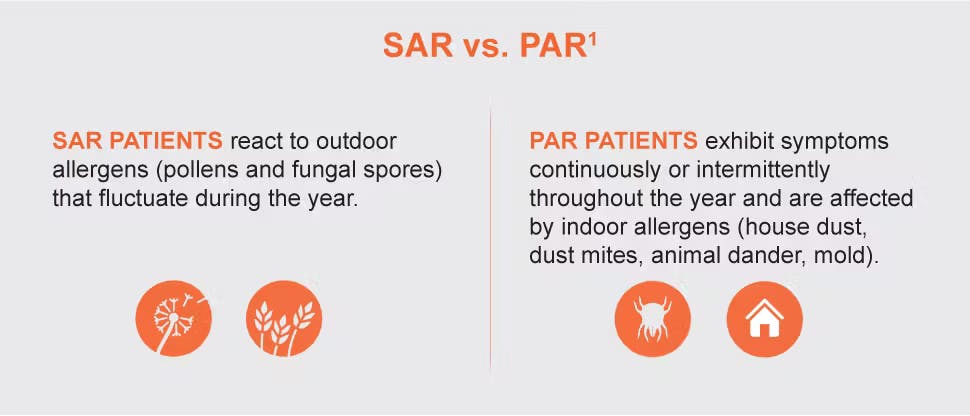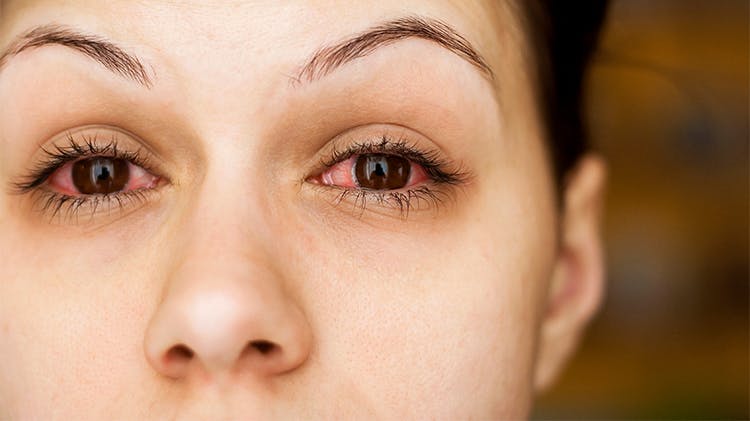Diagnosis

Seasonal allergic rhinitis (SAR) vs perennial allergic rhinitis (PAR)

Allergic rhinitis (AR) can be either seasonal or perennial (i.e., year-round) in duration.1
SAR and PAR can be distinguished based on the allergens that trigger symptoms, by how long the symptoms last, and by what time of year the symptoms occur at.1
There is evidence that PAR patients will require allergy medications throughout the year, while SAR patients will require allergy medications predominantly around pollen allergy seasons: April, May, and June for the spring allergy season and August, September, and October for the fall allergy season.1
Diagnostic tools
Diagnostic Tools
| Total Nasal Symptom Score (TNSS) | Total Ocular Symptom Score (TOSS) |
| The TNSS is a daily symptom severity score that rates nasal congestion, rhinorrea, nasal itching, sneezing, and postnasal drip on a 0- to 3- point scale.1 ,2 | The TOSS is calculated as a sum of the patients' scoring of 4 individual ocular symptoms (itching, tearing, redness and puffiness) via visual analog scales of 0-100, where 0= no symptoms and 100 = worst symptoms.3 |
|
|
|
|
|
|
Classification of AR
| CLASSIFICATION OF ALLERGIC RHINITIS | ||
| PATTERN OF SYMPTOMS | Seasonal
Perennial
|
|
| FREQUENCY OF SYMPTOMS | Intermittent: Characterised by frequency of exposure or symptoms (<4 days per week OR <4 weeks per year) Persistent: Characterised by persistent symptoms (>4 days per week AND >4 weeks per year) Episodic: Disease can occur if an individual is in contact with an allergen that is not normally a part of the individual's environment (a cat at a friend's house) |
|
| SEVERITY OF SYMPTOMS | Mild severity means that the person's allergy symptoms:
|
Moderate/severe means that one or more of the following are present:
|
Classification of allergic rhinitis
The accepted classification system for AR now goes beyond seasonal and perennial and includes a new subdivision of intermittent (IAR) or persistent (PER) disease. The severity of AR is classified as mild or moderate/severe depending on symptoms and quality of life.4
Read more about allergic rhinitis




Impact on Patient Quality of Life
Find out about the impact allergic rhinitis has on patients’ daily lives


Otri Allergy Products
Find out how our products can help your patients suffering from allergic rhinitis